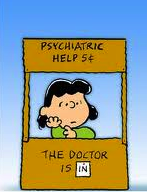One in a hundred benefit from flu vaccine, one in a million are paralyzed by it

Over 200 viruses cause influenza and influenza-like illness which produce the same symptoms (fever, headache, aches and pains, cough and runny noses). Without laboratory tests, doctors cannot tell the two illnesses apart. Both last for days and rarely lead to death or serious illness.
At best, vaccines might be effective against only influenza A and B, which represent about 10% of all circulating viruses. Each year, the World Health Organization recommends which viral strains should be included in vaccinations for the forthcoming season. Under ideal conditions (vaccine completely matching circulating viral configuration) 33 healthy adults need to be vaccinated to avoid one set of influenza symptoms. In average conditions (partially matching vaccine) 100 people need to be vaccinated to avoid one set of influenza symptoms.
Vaccine use did not affect the number of people hospitalised or working days lost but caused one case of Guillian-Barré syndrome (a major neurological condition leading to paralysis) for every one million vaccinations.
At best, vaccines might be effective against only influenza A and B, which represent about 10% of all circulating viruses. Each year, the World Health Organization recommends which viral strains should be included in vaccinations for the forthcoming season. Under ideal conditions (vaccine completely matching circulating viral configuration) 33 healthy adults need to be vaccinated to avoid one set of influenza symptoms. In average conditions (partially matching vaccine) 100 people need to be vaccinated to avoid one set of influenza symptoms.
Vaccine use did not affect the number of people hospitalised or working days lost but caused one case of Guillian-Barré syndrome (a major neurological condition leading to paralysis) for every one million vaccinations.